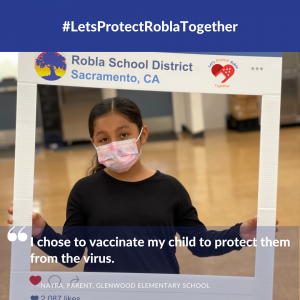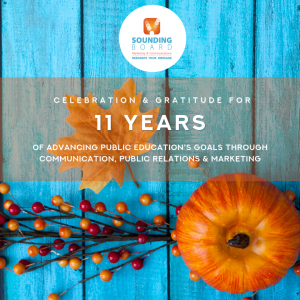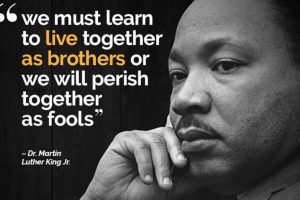 It’s no secret that California is experiencing rapidly declining enrollment. Look no further than Dan Walter’s recent article in CalMatters, “Declining Enrollment Clobbers California Schools” and John Fensterwald and Daniel J. Willis wrote about this in their EdSource article, “California K-12 Enrollment Plunges Again, Falls Below 6 Million.” Districts in high cost of living areas were already feeling the declines at least three years ago, and now are dealing with steeper declines due to the exodus of families to less expensive areas, thanks to the increase in remote work due to the COVID-19 pandemic.
It’s no secret that California is experiencing rapidly declining enrollment. Look no further than Dan Walter’s recent article in CalMatters, “Declining Enrollment Clobbers California Schools” and John Fensterwald and Daniel J. Willis wrote about this in their EdSource article, “California K-12 Enrollment Plunges Again, Falls Below 6 Million.” Districts in high cost of living areas were already feeling the declines at least three years ago, and now are dealing with steeper declines due to the exodus of families to less expensive areas, thanks to the increase in remote work due to the COVID-19 pandemic.
While I’m working with districts on marketing activities to help boost enrollment, and I am also working with districts on school closure/consolidation community engagement and communication strategies. This process is definitely picking up speed again as districts forecast their budgets and future enrollment.
What does this mean for school communication?
When facing a school closure/consolidation process, it’s important to put on your empathy hat first, when developing community engagement and communication strategies. School closures/consolidations impact the school community in different ways, and understanding how your staff, families, students and community think and feel about school closures/consolidations will greatly impact your messaging and messaging approaches.
While not an exhaustive list, I’m providing eight of the key considerations that leaders and communicators should focus on when building their school closure/consolidation community engagement processes and communication strategies:
- School closures/consolidations are emotional processes.Schools are the central community hub, places where possibly generations of families have attended. There are memories, and relationships attached to schools. People make home purchase decisions based on the schools in the community, and the proximity of the school to their homes.
Tip: Plan meaningful closure and welcome ceremonies so that students can say goodbye to their old school, and be welcomed to their new school.
- School closure/consolidation processes raise more questions than answers. People want to know when decisions will be made, what process will be used, what factors will be taken into consideration, the timeline of the process, when people can provide input and where they can find more information.
Tip: Create a frequently asked questions page for families, students, and community members, as well as one for staff members.
- School closures/consolidations are disruptive.
When a school is closed, students and staff are reassigned to a different school–or multiple schools. Parents worry if friendship and support groups will be split up, they fret about the teachers they now don’t know at the school where their child will be reassigned, and that they will lose relationships with front office staff, the school nurse, the principal and librarian.Tip: Provide an opportunity to families to network with the families and staff at their reassigned school so that they can create a sense of familiarity and community.
- School closures/consolidations impact routines.
Where it used to take a family five minutes to drive or walk to their school, now their child is being reassigned to a school 10 minutes away. Maybe a family was relying on grandparents that do not drive to walk their child to and from school, and are losing that option. Perhaps families had carpools, and those are now being split up. School closures impact the carefully crafted routines that were developed by busy working and at home parents, and create more angst in the process.Tip: Develop transportation options for families, such as busing, to alleviate the strain of this impact.
- Community engagement must be a part of the school closure/consolidation process.
A school closure process cannot be rushed, and community engagement cannot be glossed over. Effective community engagement can take anywhere from 3-6 months, and should include an advisory committee comprised of parent, staff, community and student representatives, community information meetings, surveys and ongoing communication. Rushing through this process or skipping steps will result in a lack of trust in the process and the district as a whole.Tip: Use this as an opportunity to educate your community about the statewide decline in enrollment, share data about your district’s enrollment projections and that of neighboring districts, and answer questions with empathy. Ensure that community engagement opportunities are conveniently-timed and located (consider a hybrid online and in person format) and provide child care, if needed. And don’t forget to have translators available, if needed.
- Ongoing, clear and consistent communication must be a part of the school closure/consolidation process.Providing your community and the media ongoing and consistent information about the process, timeline, access to data, and information also ensures that you are being transparent, which keeps your district’s trust barometer high. Make sure to include your local elected officials in your communication loop as well.
Keep your information clear and consistent–don’t muddle the communications or community engagement opportunities with other information about district initiatives. Keep the focus on the topic of school closures.
Provide updates immediately following the meetings, preferably from the superintendent. The superintendent should be the face and voice of this process, and stand behind the process.
Tips: Create a website dedicated to the school closure process, including timelines, FAQs, presentations and data. Also include a dedicated email address where people can send questions and receive responses.
- Be forthright and clear about the intended outcome of the process.If the intended outcome is that a school will be closed, state that clearly at the beginning of the process. I have seen where communication has been wishy-washy on this, which kept the door open to not closing schools, and has delayed the school closure process by years. This results in further financial distress on the district and fewer resources available to students.
If your district is looking for ways to keep a school open while opening a magnet or some other program that will cohabitate on the same campus, be clear about that as the intended outcome. Whatever the outcome you are seeking, be clear and consistent from the beginning of the process through the end of the process.
Tip: It’s not more clear than this: “We will be closing X schools at the end of this process. We know that this is not an easy process for our staff and families, and we will work together to make ease this transition.”
- Provide options.
School closures/consolidations, on their own, are fraught with the fact that families don’t have a lot of control over the outcome. However, you can provide them options on: transportation, to which school their child will be reassigned, what will help ease the transition.Tip: Ask families, “How can we make this transition easier for you?”
While the final decision to close schools will be one of the most difficult ones that your school board will ever have to make, the process can ensure that your community is informed about the process, has opportunities to engage, and that they understand why the decision needs to be made.
Need help?
If your district is facing a school closure/consolidation process and needs assistance with community engagement and its communication, please feel free to contact me so we can discuss opportunities to partner for a successful process.

 Crises are inevitable in any organization. But, they’re also an opportunity to inspire confidence and trust in your organization.
Crises are inevitable in any organization. But, they’re also an opportunity to inspire confidence and trust in your organization.








Wow. As a Star Wars fan, I felt like I’ve reached a career pinnacle when hearing that.
But, like Yoda, I really needed to go within to process this. Because, what does being a Yoda of school PR mean? Here are some of Yoda’s greatest qualities: intelligence, wisdom, and skills. He also has the ability to absorb and deflect Force lightning, devoted to the light side of the force.
I realized that I was surrounded by about 300 Yodas of school PR at this conference. Working with a school PR pro means that you’re working with someone who has the intelligence, wisdom and skills directly related to school PR. Need someone to communicate the LCAP in understandable ways to your community? A school PR pro can do that. Need someone who understands the intricate and delicate relationships between labor and admin, and how to communicate without stepping on a landmine? A school PR pro can do that. Need someone who can write a statement or press release in less than 10 minutes, ID people to interview, and navigate relationships with the media? A PR pro can do that (and even deliver a whole story package to the media).
From bringing order to chaos, to calmly communicating about just about any topic, school PR pros have the intelligence, wisdom and skills to ensure that schools, school districts and county offices of education keep the relationships with their publics at the forefront of everything they do. And let’s just say that the past two years have been a constant state of absorbing and deflecting lightning and being a force of good. School PR pros aren’t just great story tellers–they identify which story to tell, how to tell it, who needs to hear or see it, and when.
There are approximately 600 Yodas of school PR who are members of CalSPRA–and many others across the country. And if your district or COE hasn’t already hired one–either as an employee or a contractor, your communications isn’t operating as well as it should (and you probably already know that). We can help you use the force of communication for good.